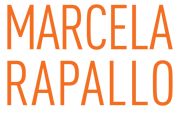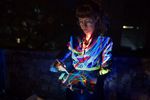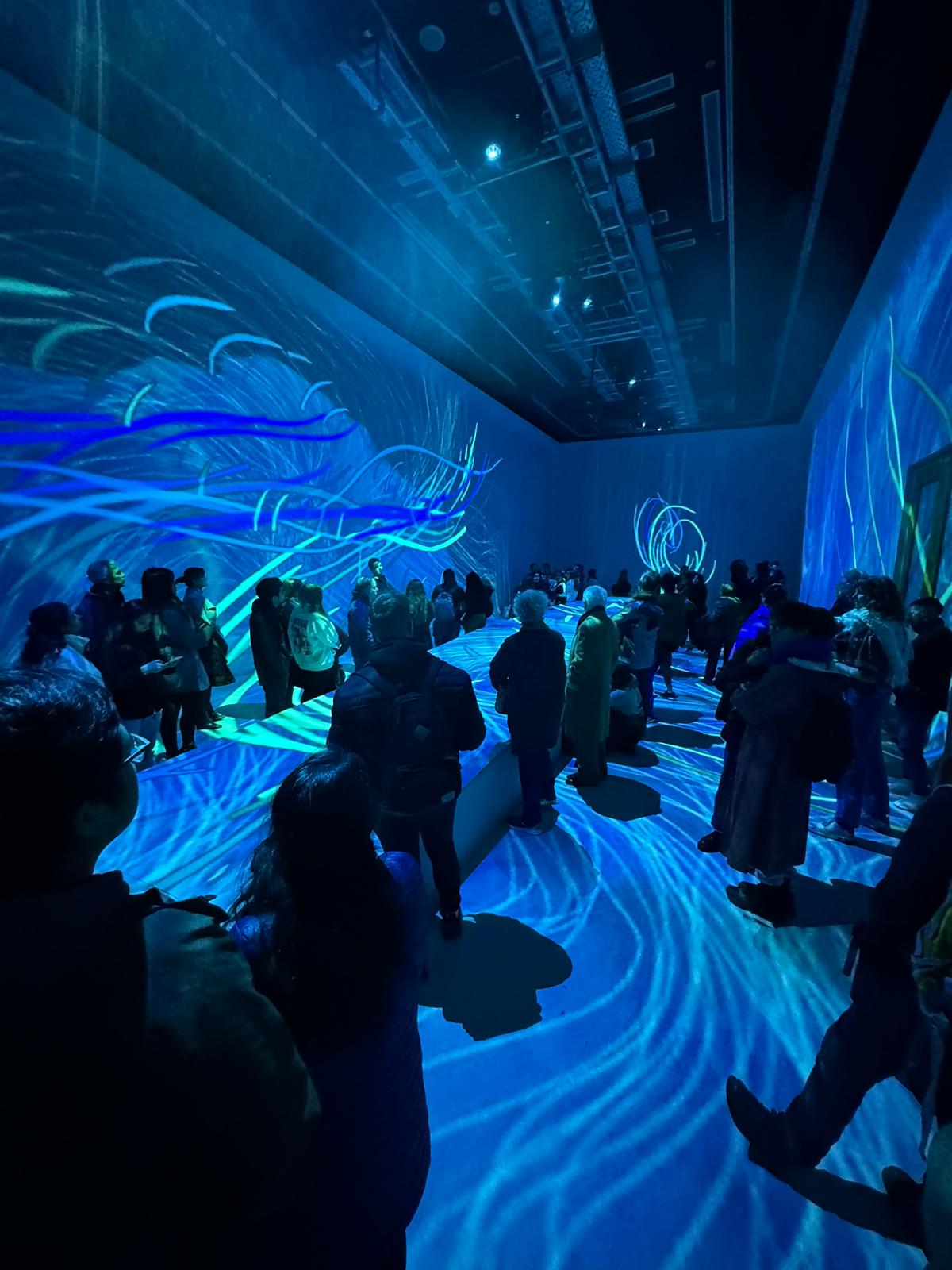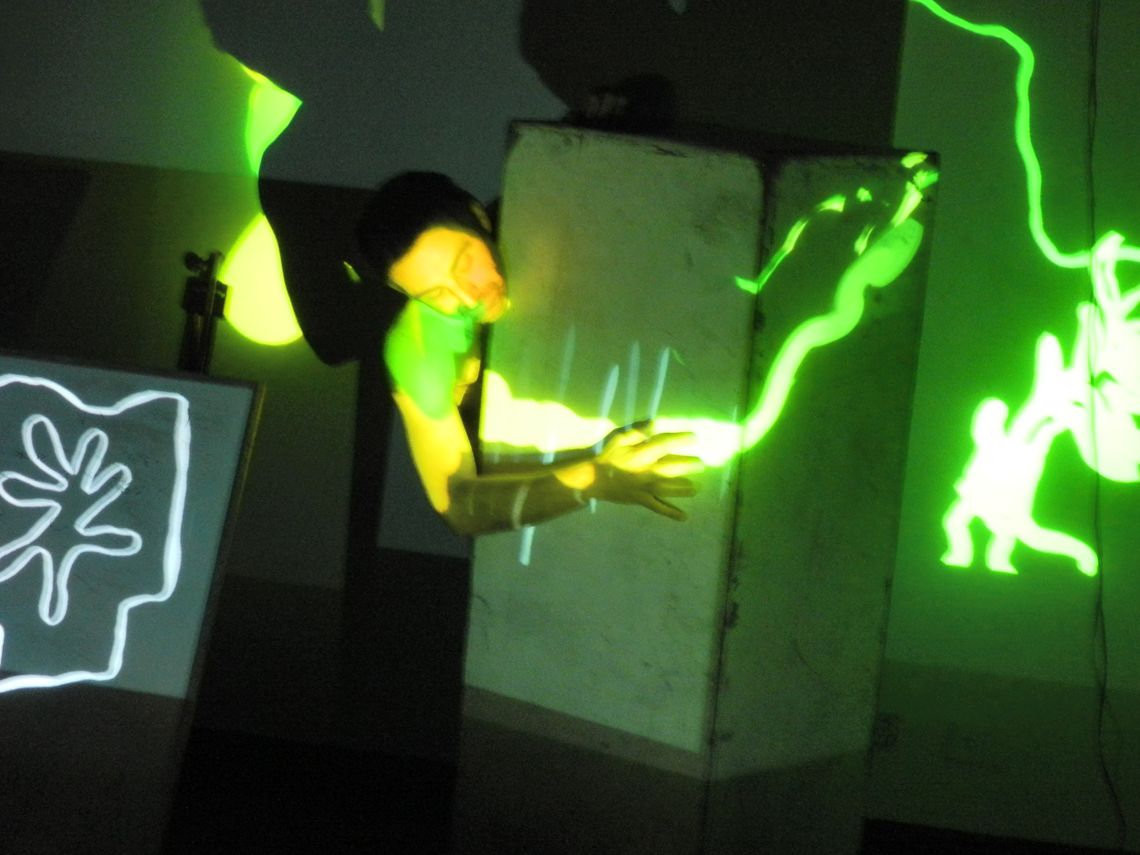Drawing an Aleph is a metaphor about the creative gaze, and addresses how it is constituted collectively. The work project consists of a digital drawing in real time, in constant transformation, formed by lines that reproduce in loop the strokes made with a digital pencil, which travel over a moving canvas and fade away giving rise to new drawings.
Drawing an Aleph is a work project that has not yet been realized, but whose gestation stage was reflected in the university equivalency thesis I did for the Bachelor of Visual Arts at the National University of Arts.

Starting from associating my own childhood game with the Aleph described by Jorge Luis Borges in his short story, I took the concept of the Aleph as the finding of an interstice in the gaze: something unreal that explains reality and gives it a deep meaning. The proposal is to investigate how the collective imaginary and personal experience are articulated in one's own gaze, and to work on the idea that this interstice in the gaze corresponds to the construction of a creative gaze.
The idea is to take the drawing of an Aleph as a representation of one's own gaze in constant change. Of each personal universe constituted by the sum of looks of our peers, of those who were there before and those who will come after. To represent the choice, the relationship between what there is to see and what I look at. What to embrace with my gaze: what to choose from the network of possibilities. The proposed representation of the drawing of an Aleph is that of an image that is growing without changing size, in constant growth. The drawing of an Aleph is conceived as the interstice in the gaze.
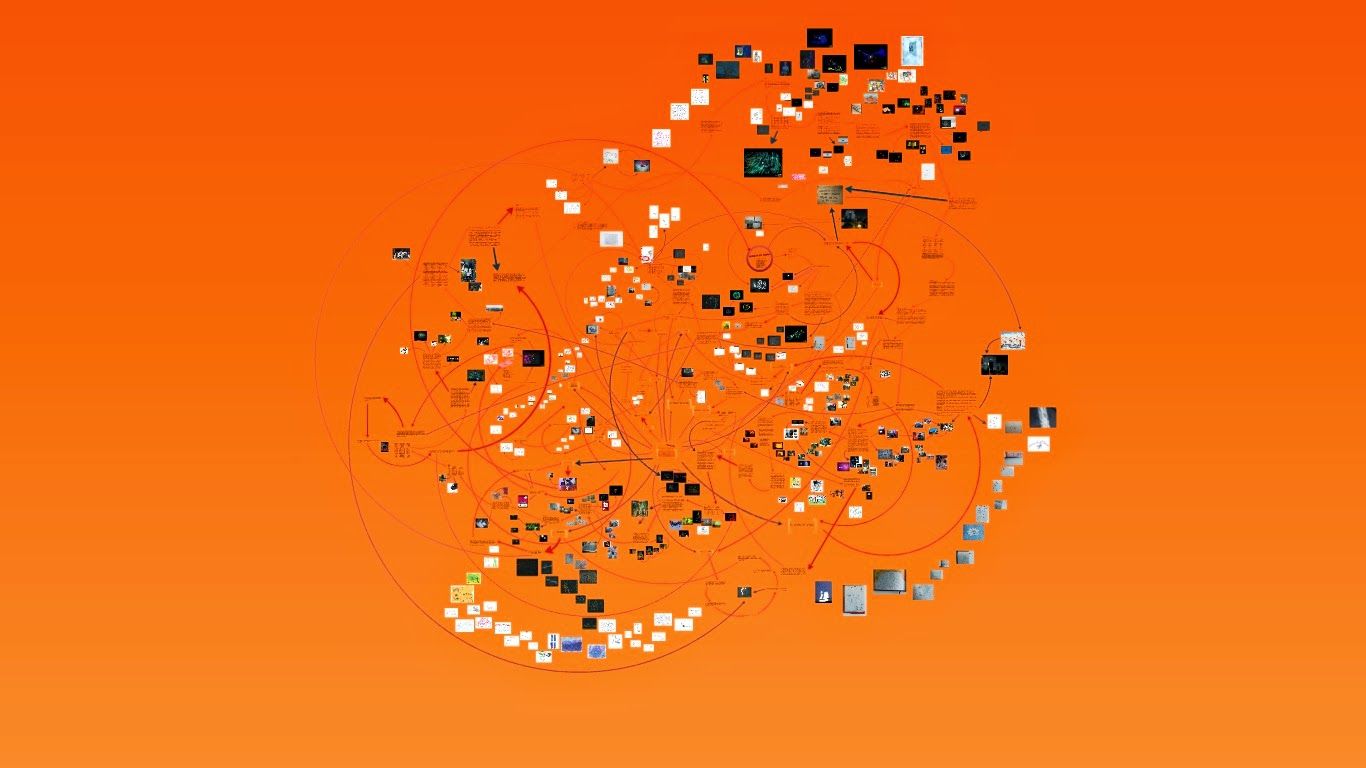
Drawing an Aleph is a project that arose from reading Borges' story as a teenager. The description of that point where all the points of the universe converge, reminded me of a childhood game, secret, solitary and silent. I used to play it during recess in kindergarten. I had to sit in a certain place in the playground, put my four index fingers and thumbs together with the fingertips facing each other in a cross, and concentrate my gaze and my thoughts on the tiny space in which my fingers never touched each other. In other words, I had to leave my gaze fixed on an empty space that I could not see. A universe of possibilities opened up and he imagined extraordinary worlds.
The scenario in which this game is set is that of a great absence, the death of the mother as the protagonist of early childhood. The image that comes to mind when I think of that pain at the beginning of life, when there is still no memory, is that of confusion. The image is painful, but ambiguous. Not having a conscious memory of the traumatic event, the pain is lodged in an unknown, abstract place, all the doors seem to be open, the sensation is that of having been released from the net and left floating in the void. And I say that this sensation is ambiguous because in the greatest confusion there are also all forms and all things. The alternative to inhabit that place is to wonder, to play, to open that channel.
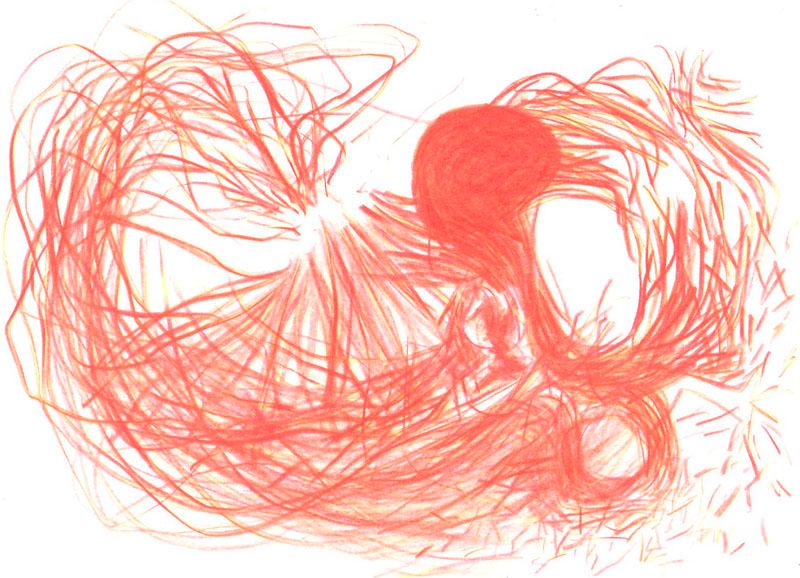
When I read Borges' story as a teenager, I remembered that childhood game and thought of making a play. I proposed to my childhood secret games partner to make a play with puppets, which did not materialize, but years later I understood that we had to represent that Aleph with the language we were developing to be able to draw digitally in real time and collectively.
The image of that Aleph could then be permanently reconstructed. The drawing could expand by tracing, undoing, and retracing again and again. Going through different rhythms, times and styles, figurations, abstractions and directions of the line.
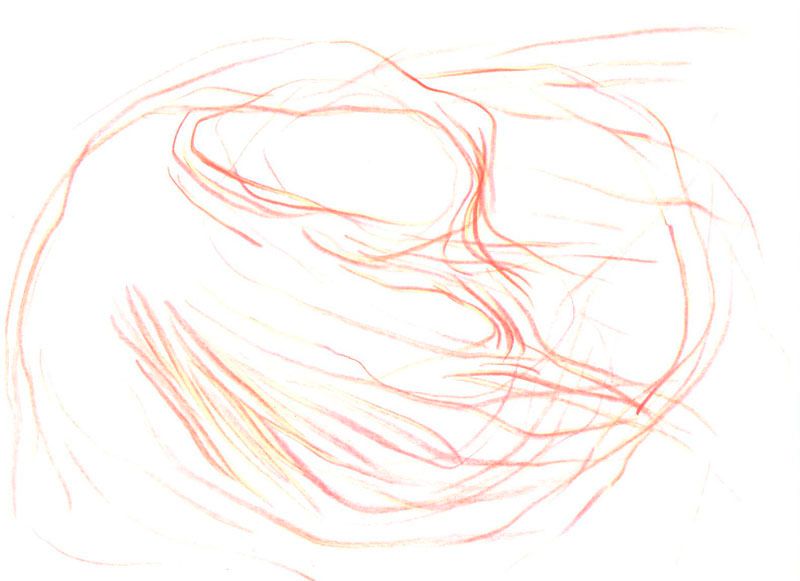
To investigate the concept of the interstice in the gaze, I made with Andiamo digital drawings in real time on images that I associated with that concept: memories of sensations, images of dreams, drawings that sought to represent the images of thought. The next step I planned was to draw situations seen from different points of view simultaneously. The idea is to test this in collective exercises to establish codes for the collaborative dynamics that will be applied in the final stage.
The next projected stage is the realization of the first prototype in Andiamo to generate the moving structure of the Aleph (the canvas), implementing the code together with the development of the drawings. The work is completed by opening the structure of this Aleph to receive the imprint of many looks, and be hosted on the Internet in constant transformation.
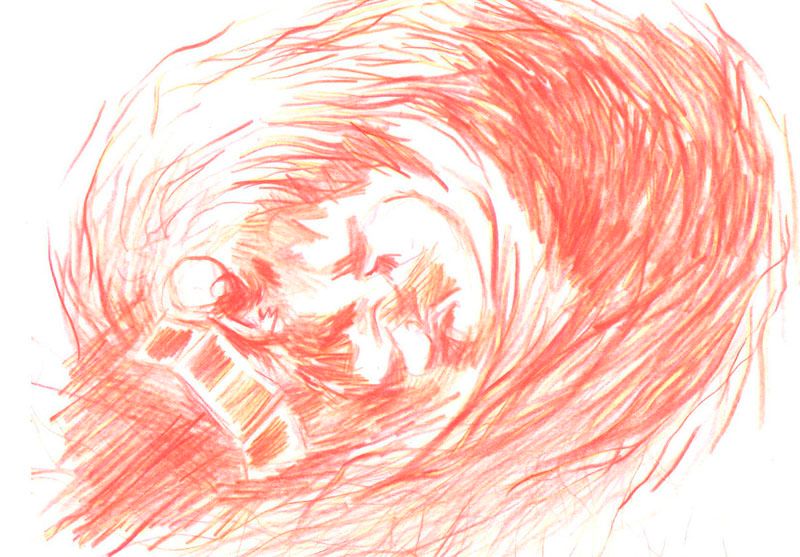
I plan to realize the work with Andiamo to make the previous prototypes, and with Trazos Club for the final stage, because both technologies are part of the development process of the work since its ideation stage. There is a parallel in the development of the concepts and functionalities that we apply in the development of the platforms.
When I wrote the thesis, the Trazos Club platform did not yet exist, that is why it is mentioned with the name that the project had at that time: "Trazos unfolding". In recent years, in addition to the progress in the development of the work Drawing an Aleph, which is the current version of Trazos Club, the practice of collective drawing that I have been developing with it through laboratories is also an important advance.
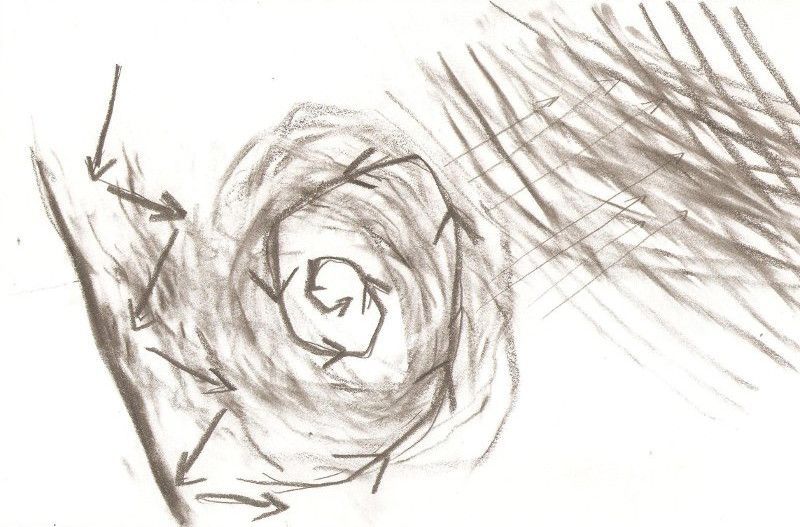
Looking at the process from a distance, I think that the moment to materialize the work Dibujar un Aleph will come when we have developed the next stages that we have projected with Trazos Club, which consist of collective drawing proposals hosted on the platform. As both projects were conceived simultaneously with common conceptual bases, I consider that Trazos Club is the ideal platform to materialize the drawing of an Aleph that represents the creative and collective look. I think that in that look there is a construction from the totality of possibilities, and that one always builds from others, from the collective imaginary, in a network. The work will aim to be able to constitute an Aleph formed by different looks, always changing.
